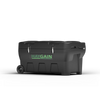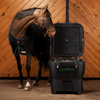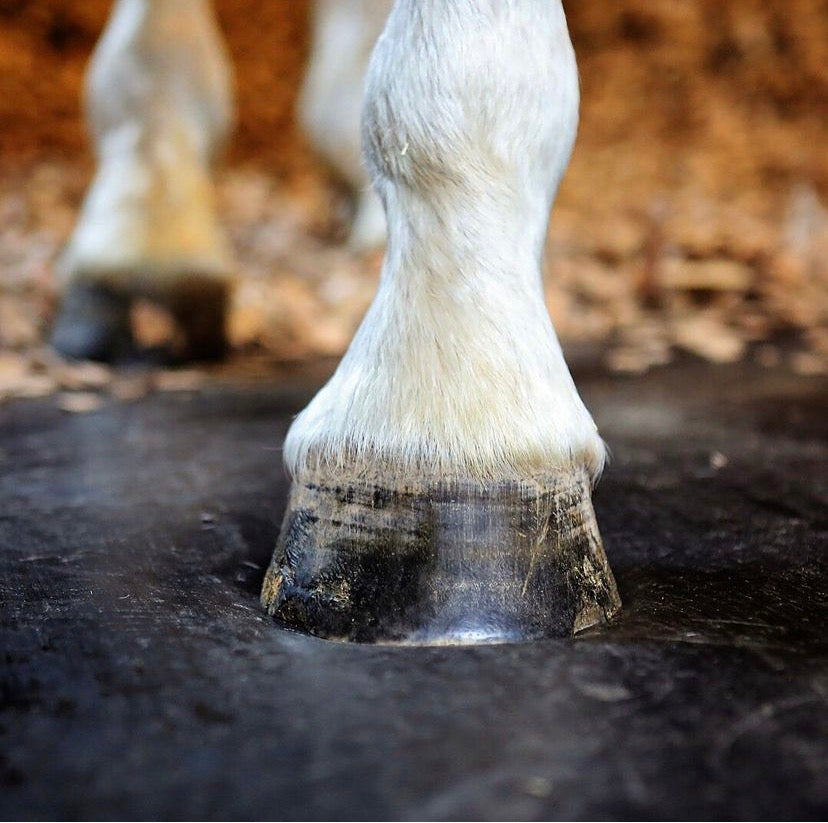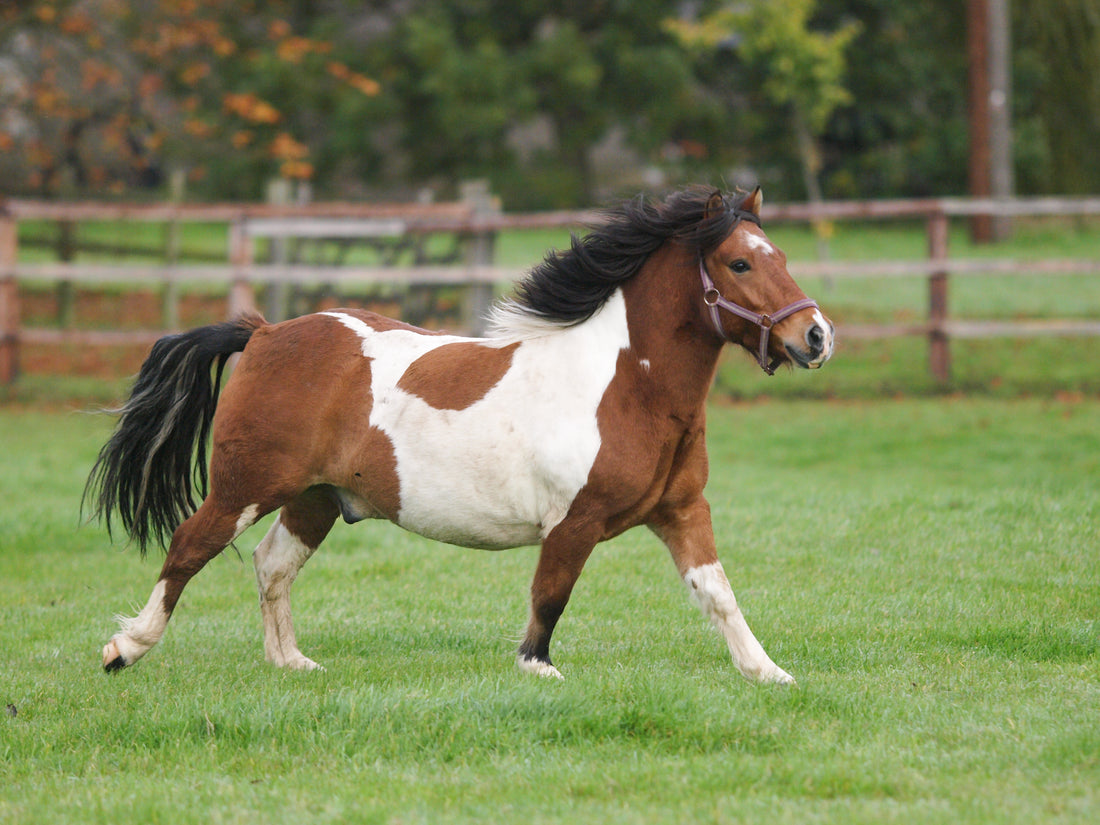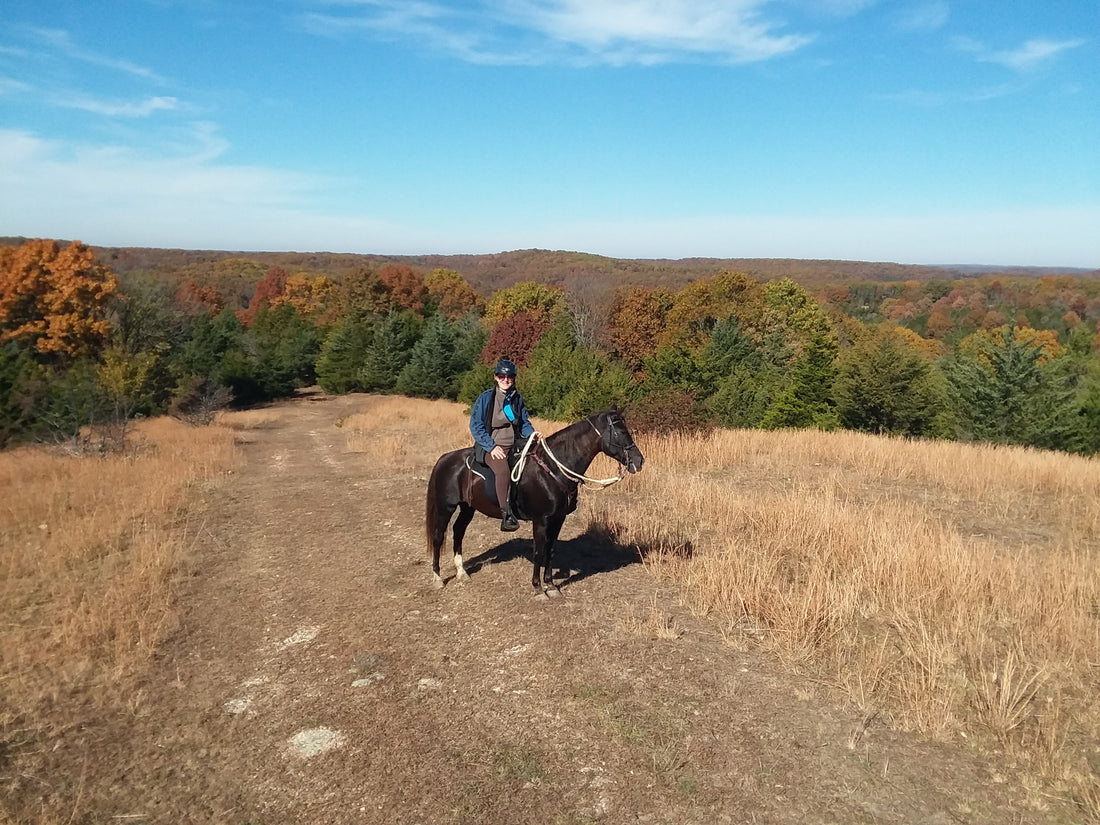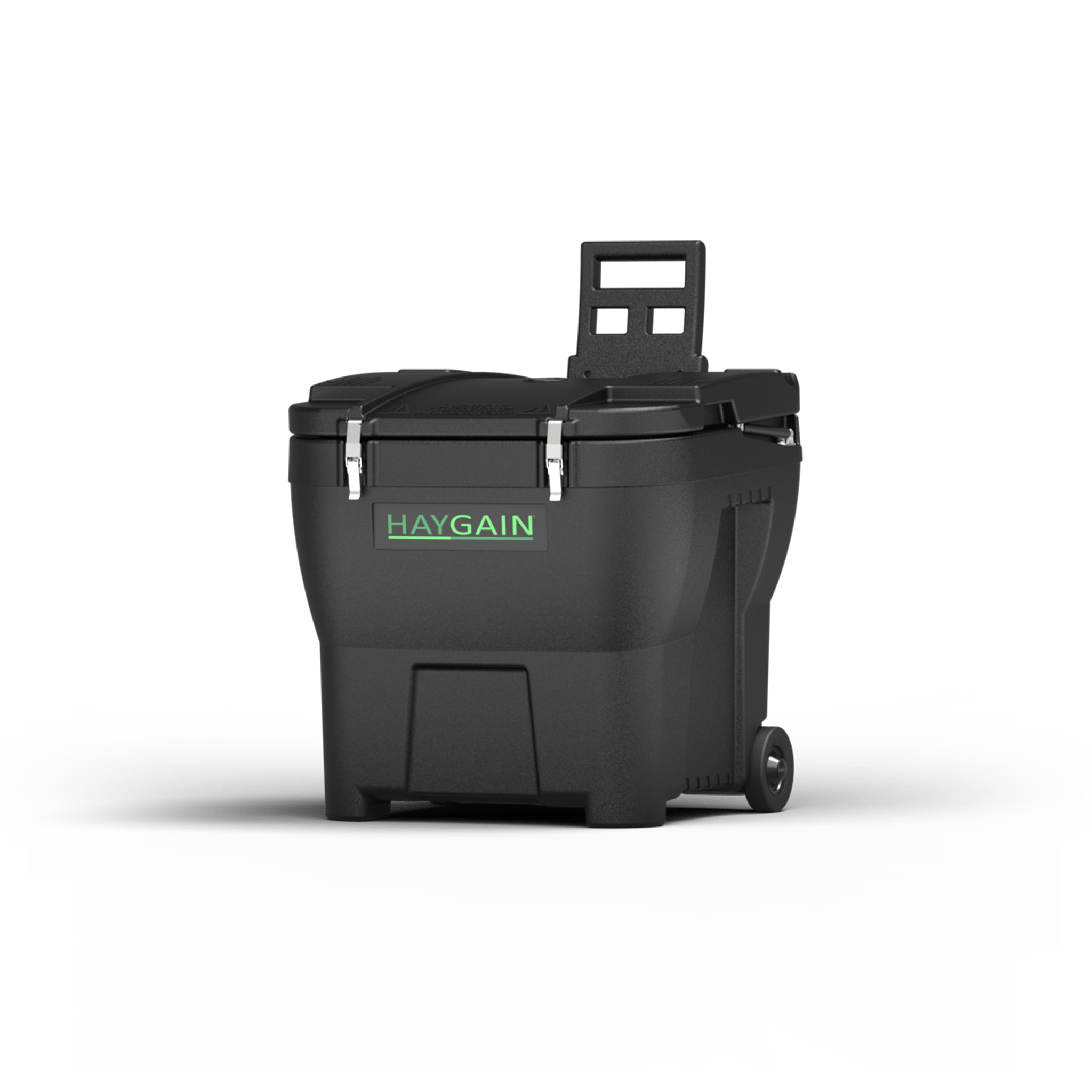KBIS veterinary advisor Annie Bevins MA Vet MB MRCVS discusses the common causes of respiratory disease in competition horses and explains how both management practices and medication can have a part to play in their prevention/ treatment.
 Horses have evolved to be free roaming grazing animals. Given the option to live this way they will spend about three quarters of their time with their heads down and will be continually on the move albeit slowly, as they search for the tastiest grass. As a result of this evolutionary fact, the respiratory system of the horse is relatively inefficient at clearing pathogens and irritants away. As particles simply “drain” out under gravity with the head down, nature has not concentrated so much on the mucus clearing mechanism of fine hairs lining the airway that are enjoyed by other species.
Horses have evolved to be free roaming grazing animals. Given the option to live this way they will spend about three quarters of their time with their heads down and will be continually on the move albeit slowly, as they search for the tastiest grass. As a result of this evolutionary fact, the respiratory system of the horse is relatively inefficient at clearing pathogens and irritants away. As particles simply “drain” out under gravity with the head down, nature has not concentrated so much on the mucus clearing mechanism of fine hairs lining the airway that are enjoyed by other species.
Most horse owners in the modern world do not have the facilities or the time to allow their horse access to the plains and so we keep them in stables for at least part of the time, usually more in winter due to ground conditions. Unless the horses are really lucky they have relatively restricted grazing areas compared with their wild cousins. With the ever increasing value of competition horses it has become usual to have individual turn out paddocks to avoid conflict, but this also has the effect of reducing the amount of space available for an individual horse to move around whilst grazing. Horses roaming free will often jog as a group from one location to the next and even the small increase in respiratory effort involved increases the volume of air exchanged in the lungs.
The equine respiratory tract is susceptible to many infections such as strangles, which affects the upper airways and is similar to a human streptococcal throat but generally more serious. Influenza, herpes and many other non- specific viruses are diseases of the lower airways often with bacteria being involved as secondary invaders. The lower airways are defined as everything below the vocal cords- i.e. the trachea (wind pipe) bronchi and the lungs. When acute infection occurs as in influenza, the horse will usually have a raised temperature but whatever the cause, lower airway disease will manifest as increased nasal discharge, cough, exercise intolerance and increased respiratory effort. Whilst lower airway disease may be initially caused by infectious agents it is almost inevitably aggravated by the environment and on many occasions the environment is the only cause. The symptoms are due to increased mucus production and spasm in the smaller airways and are caused either by infectious agents or irritants and allergens in the horse’s environment. When symptoms persist for more than about a week or so the condition is described in medical terms as being chronic and the majority of respiratory conditions fall into this category.
Whilst lower airway disease may be initially caused by infectious agents it is almost inevitably aggravated by the environment and on many occasions the environment is the only cause. The symptoms are due to increased mucus production and spasm in the smaller airways and are caused either by infectious agents or irritants and allergens in the horse’s environment. When symptoms persist for more than about a week or so the condition is described in medical terms as being chronic and the majority of respiratory conditions fall into this category.
“ Broken wind ” “Heaves” “COPD”(Chronic obstructive pulmonary disease) “RAD” (Recurrent airway Disease) and many other titles have been awarded to chronic equine airway disease, but recent research has identified two types which can be inter related: Inflammatory airway disease (IAD) , the body’s response to irritants in the environment and Recurrent Airway Obstruction (RAO) which it is now called Equine Asthma and is the result of an allergic response. The latter condition is defined as recurrent disease with clinical signs of airway obstruction which can be partially reversed by bronchodilators.
In both cases the clinical symptoms are the same; reduced exercise tolerance with longer recovery time, increased respiratory effort, whitish discharge and cough. The definitive diagnosis can be made by your veterinary surgeon from a tracheal wash which samples the mucus as does the more specialised technique of bronchoalveolar lavage. A sample of the cells is sent for laboratory analysis. It is clear that what starts as an inflammatory condition can easily develop into an allergic one as the horse become sensitised. Many horses will develop chronic airway disease following minor respiratory infections when the airways are already compromised. It makes sense therefore to be aware of the risks and take adequate precautions with respiratory health. I always would assume that any respiratory condition is likely to turn allergic. Prevention is better than cure!
Equine asthma is obviously the more severe of the two scenarios, but IAD can develop into equine asthma and there is clearly a degree of overlap between the two conditions. However inflammatory airway disease can and does exist in a sub clinical form where none of the obvious respiratory symptoms are shown.
Virtually every horse that is stabled for any part of the day will have some degree of respiratory compromise.  The good news though, is that the lung has a massive reserve and even the elite sports horses working under maximum pressure will not actually use all their reserve. Respiratory problems are much more of an issue in the racing industry than for competition animals. Most dressage horses and show jumpers compete at their elite levels with low grade airway disease but it makes sense that greater oxygen availability may just make the difference in a tight jump off or when pushing for an extravagant extended trot.
The good news though, is that the lung has a massive reserve and even the elite sports horses working under maximum pressure will not actually use all their reserve. Respiratory problems are much more of an issue in the racing industry than for competition animals. Most dressage horses and show jumpers compete at their elite levels with low grade airway disease but it makes sense that greater oxygen availability may just make the difference in a tight jump off or when pushing for an extravagant extended trot.
We can improve the situation for all horses by trying to mimic their natural condition as far as possible and simple management changes are vital. Disregard your beautiful corner mangers and hay racks, ditch your hay nets and feed everything off the floor. The longer the horse stands with his head down, the more drainage occurs and the less of the smaller particles get into the lungs. Reduce the dust in your environment by using dust free bedding. All hay, no matter how lovely it smells contains a certain amount of dust and spores. If hay is fed I would advise steaming it at high temperatures which destroys bacterial and fungal spores. Haylage is a generally regarded as a good dust free alternative but can be a little rich for some horses and can also harbour bacteria. This too benefits from steaming.
It goes without saying that turn out is important, but in any case increase the amount of access to fresh air by increasing the ventilation in your stable. Most modern loose boxes have an open top door and very little if anything in the back. I would advise taking out the little window at the back or making a hole if there is not one. The aim is to create air movement. Horses are very tolerant to cold and it does not really matter if there is a gale blowing way above the horse’s head if he has a rug on; he should have his head down most of the time anyway! Similarly there is rarely a need to close the doors in a barn system, especially if there is no large vent in the ridge as is desirable. If you stand in the back of the box and can smell any ammonia at all your ventilation is not good enough. Care should be taken with mucking out too.  Ideally this should be done with the horse out of the stable, as disturbing the bedding will release any dust or spores back into the air. If you absolutely have to use straw I would always advise either putting the new bed into the bottom or spraying the clean bed with water to lay any dust and spores. If you have a horse with an airway problem it is no good just having this one on dust free management. The whole airspace needs to be considered. In a livery yard barn situation it is probably worth moving the affected horse to the end stable, provided of course it is not next to the hay store. If your horse is very allergic I would advocate 24 hour turnout. He will be much better out, with a rug on, a wind break and with constant access to fresh air than standing still inside breathing in fungal spores.
Ideally this should be done with the horse out of the stable, as disturbing the bedding will release any dust or spores back into the air. If you absolutely have to use straw I would always advise either putting the new bed into the bottom or spraying the clean bed with water to lay any dust and spores. If you have a horse with an airway problem it is no good just having this one on dust free management. The whole airspace needs to be considered. In a livery yard barn situation it is probably worth moving the affected horse to the end stable, provided of course it is not next to the hay store. If your horse is very allergic I would advocate 24 hour turnout. He will be much better out, with a rug on, a wind break and with constant access to fresh air than standing still inside breathing in fungal spores.
Special care should be taken when travelling your horse as horse transport has relatively little free air space, so good ventilation here is important. In addition horses generally have to stand tied with their heads up for the entire journey with the hay net at nose height. I would advise trying to tie the net as low as possible,  whilst avoiding the risk of getting the horses feet caught in it. Tie your horse as loosely as is practical and during long journeys, take a break, untie the horses and allow them to stretch their necks down. My preferred way is to offer some chaff off the floor. All nets provided during transport should obviously contain dust free forage. Shipping fever is a serious pneumonia seen after long journeys with stressed horses and is directly related to head position where infectious agents in the environment are unable to drain from the respiratory tract.
whilst avoiding the risk of getting the horses feet caught in it. Tie your horse as loosely as is practical and during long journeys, take a break, untie the horses and allow them to stretch their necks down. My preferred way is to offer some chaff off the floor. All nets provided during transport should obviously contain dust free forage. Shipping fever is a serious pneumonia seen after long journeys with stressed horses and is directly related to head position where infectious agents in the environment are unable to drain from the respiratory tract.
So how do you know whether your horse has an airway problem? As mentioned previously he probably does! (albeit to a minor degree.) Studies have shown that the amount of mucus seen on scoping increases with the age of the horse and this is explained by repeated exposure to respiratory irritants. The first signs of clinical disease are usually a little bit of whitish discharge over the box door in the morning or a little cough or “clearing his wind” at the start of exercise. Such horses do not really need veterinary intervention; changing the management can alleviate symptoms. Some people find over the counter remedies such as respiratory herbs and cough mixes can help together with reducing the dust in the hay. These supplements usually work by loosening the mucus so making it easier to clear. Should your horse show more serious symptoms such as repeated coughing, poor exercise tolerance and increased respiratory rate then the vet should be called. A full history will be taken, the horse thoroughly examined and lab work done.
Treatment is tailored to the individual horse based on clinical and laboratory findings and the severity of the disease. The aim is to relieve the symptoms by clearing the mucus and preventing further excess secretion. Bronchodilators are drugs which dilate the small airways, relieving the spasm and help a little in freeing of the mucus. Steroids are the drug of choice to stabilise the cells, prevent any allergic reactions and reduce the inflammation and excess mucus production. Your vet may also prescribe a mucolytic which will help loosen the mucus. These medications can be given by a variety of routes. The oral route, (by mouth) is by far the easiest to manage, but has the disadvantage of the horse not eating all his medication and relatively higher doses are needed. 
If unfortunately your horse develops equine asthma (RAO) he is likely to require long term medication along with management changes. Once the clinical signs have gone, your veterinary surgeon will probably slowly withdraw the medication, which has implications in the competition horse, so always ask the vet for advice about withdrawal periods. Sadly too, if RAO or asthma is diagnosed one year it is very likely to come back with increased severity the next if changes cannot be made to the environment. The good news is that where horses with airway inflammation can be removed totally from the source of irritant the clinical signs can resolve relatively quickly, often within a few week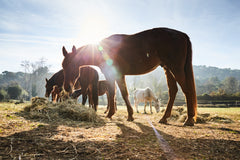 s.
s.
In conclusion all horses have a certain degree of respiratory compromise. As the weather starts to turn and the ground softens, our horses are now starting to spend more time indoors. Now is the time to start implementing the management changes which will prevent inflammatory airway disease and reduce the likelihood of equine asthma.


